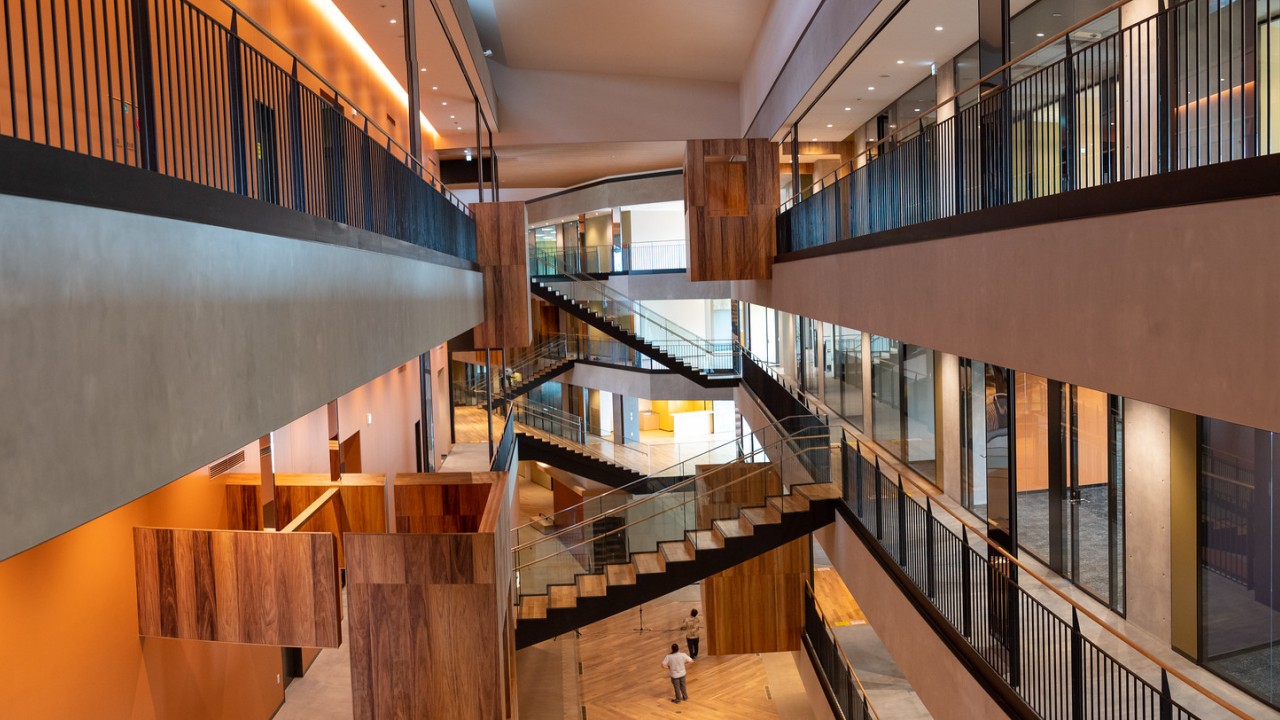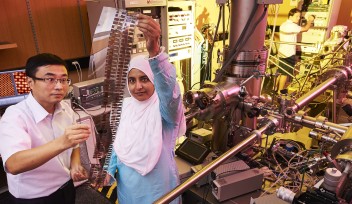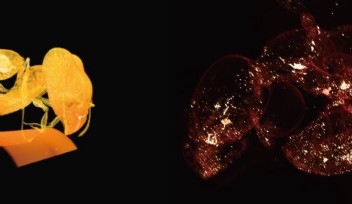New OIST building with open, modern design to help promote interdisciplinary research

Lab 5, the newest building to open its doors at the Okinawa Institute of Science and Technology (OIST), is designed to help promote close interactions among researchers and students, and collaboration across disciplines. Design for the lab began nearly six years ago and construction took over two and a half years to complete. The building houses the OIST Center for Quantum Technologies, the Theoretical Sciences Visiting Program (TSVP) Center, and various research units, many of which will be moving into the building over time.

The 16,000 m2 laboratory has two distinct research sides across a central atrium, with wet labs on the northern side and dry labs on the southern side. The wet labs, or experimental laboratory floors, are six meters high with interstitial space above the ceilings to allow for equipment reconfiguration, and the dry labs, or theoretical laboratory floors, are four meters high. This design allows for a three-story wet lab side and a four-story dry lab side in a single building, maximizing functional space.
The two sides are conveniently connected by multiple bridges and staircases in an atrium space that runs the length of the building, creating a spacious environment. In addition, wooden box seating areas are placed in several areas to be used as a meeting space or lounge areas.
“With the completion of Lab 5 we now have the space available on campus to facilitate 100 faculty,” said Mr. Scott Rudisel, Vice President for Buildings and Facilities Management. “The concept of Lab 5 is an open environment, with more communal spaces. These communal spaces can be used for lectures, presentations, or seminars. We hope to introduce artwork into the new lab from local artists or through rotating art exhibits, as we hope to embrace science and art.”
Prof. Yukiko Goda, a new faculty member at OIST, who leads the Synapse Biology Unit, has been gradually setting up her lab’s equipment in Lab 5. “We are a neuroscience lab and are interested in how nerve cells communicate within the brain and how the changes in communication control animal behavior,” Prof. Goda explained. A big part of their research is on the functions of cells called astrocytes, which are just as numerous as nerve cells in the brain.
“There’s emphasis in promoting interaction among people with space and tables to sit around and talk,” Prof. Goda said. “The university values bottom-up research and it’s good to work with young and curious minds. We look forward to starting new collaborative projects with other scientists as we build our group.”

Dr. Chen Chi Wang, research support leader of the Animal Resources Section, manages the new vivarium facilities at Lab 5. A robotic system for handling integral cages and a tunnel washer will be fully installed in December. “With this powerful, automated robotic washing system, we can reduce maintenance, save time, and still maintain high quality animal care according to international animal welfare standards,” he explained.
Operations and progress are rigorously checked every three years by AAALAC International, a private, non-profit organization, which helps ensure the humane treatment of animals in science. “Our animal facility is the top facility in Japan, and we aim to become one of the top facilities in the world,” Dr. Wang said.

Interested in seeing more photos of Lab 5? Please visit here.
For press enquiries:
Press Inquiry Form

















